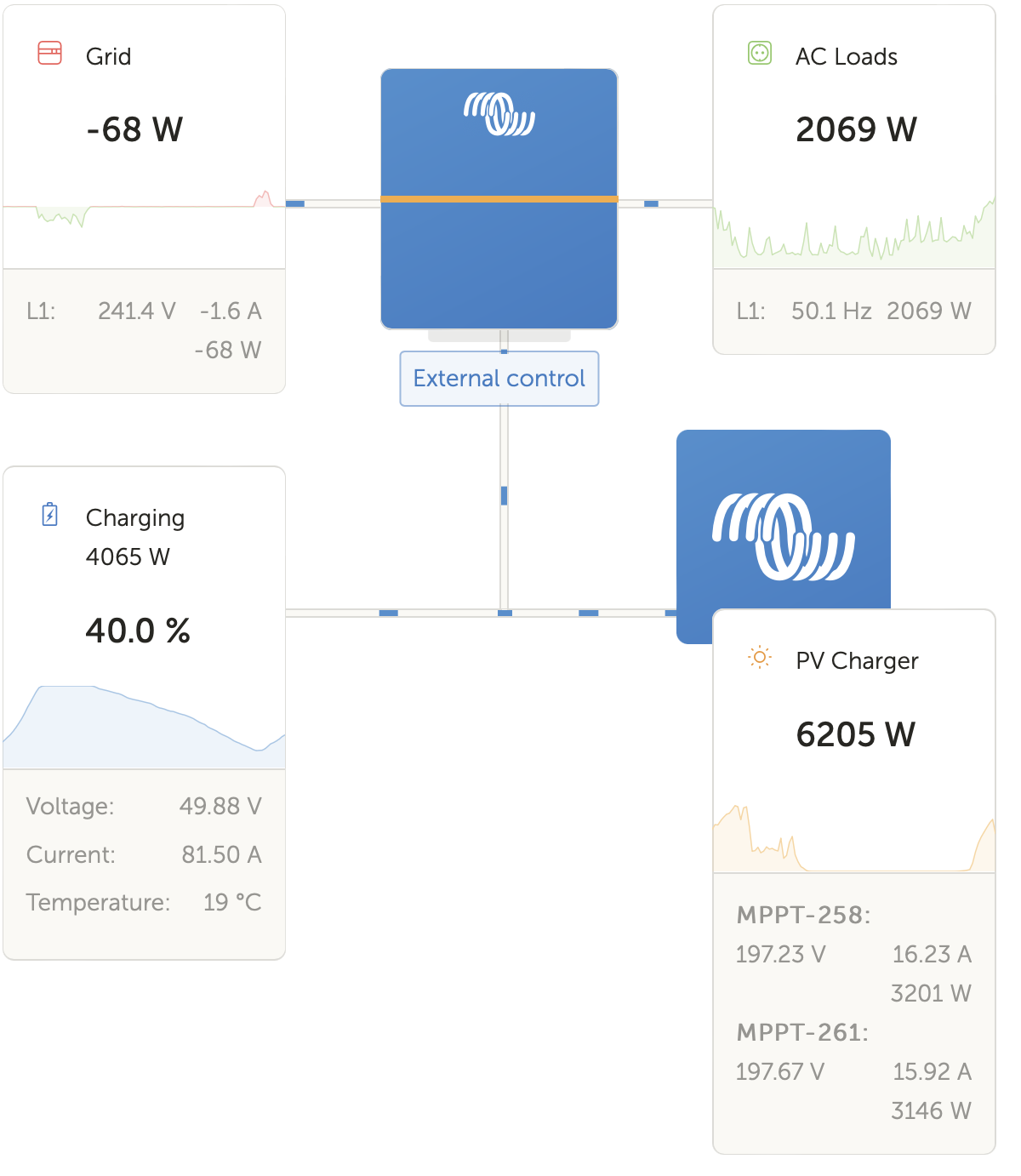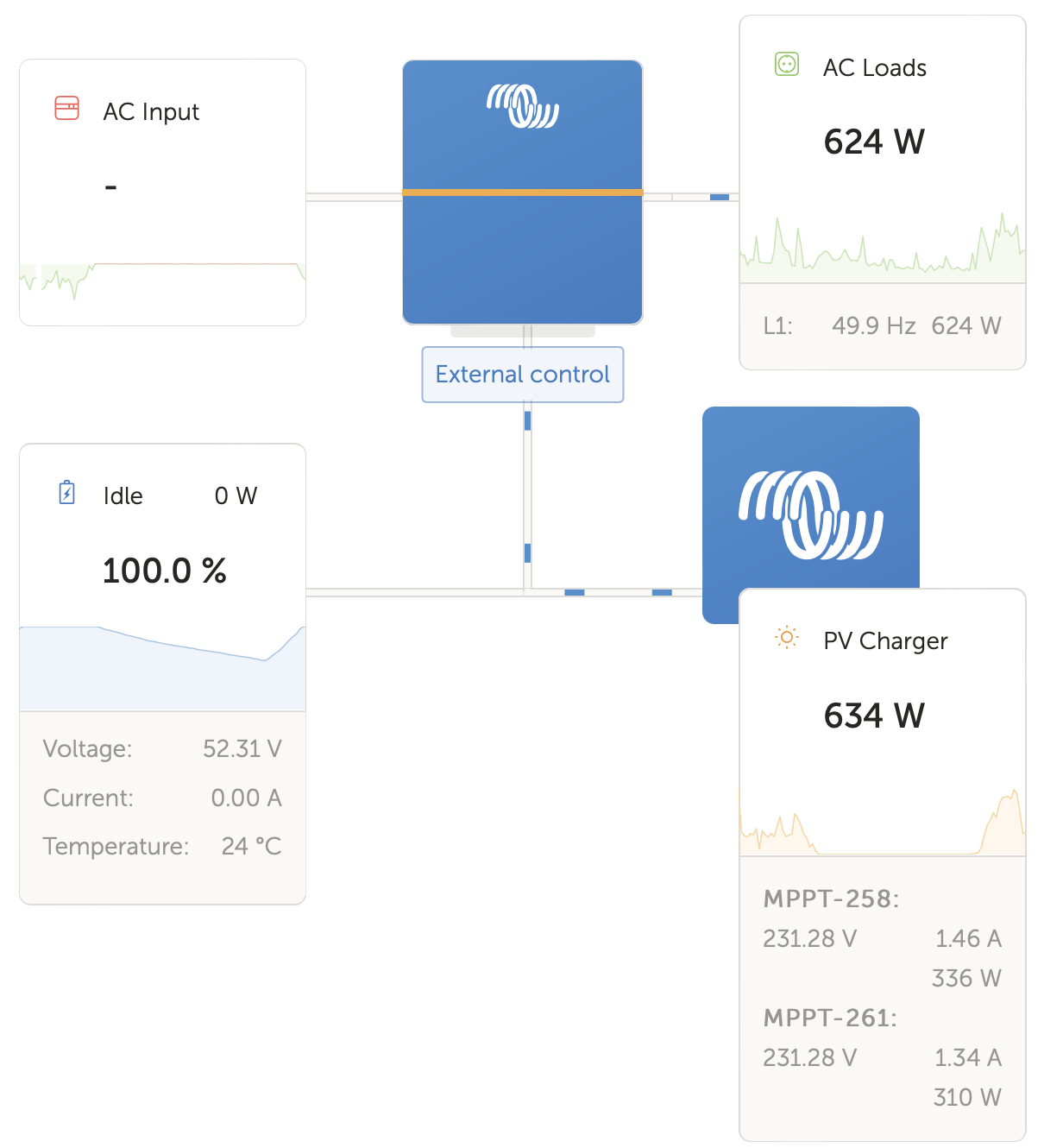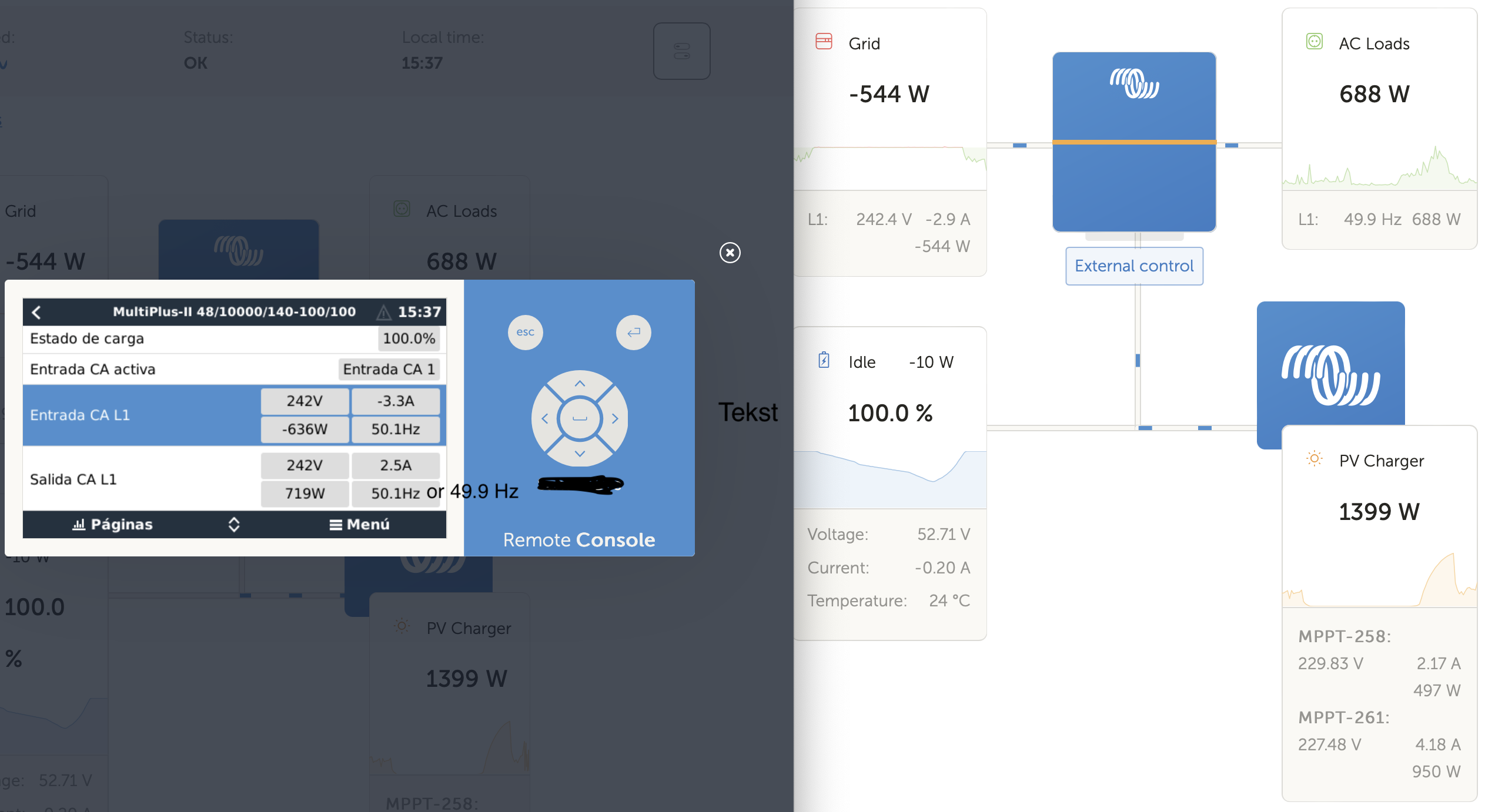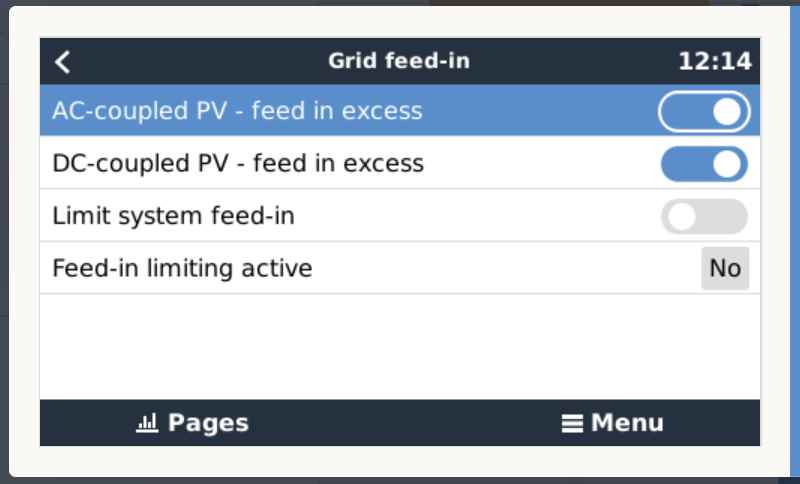Problem: When the batteries are full, the electricity production drops.
Location: Costa Blanca, Spain.
Large house in a rural area connected to the electricity grid.
Purpose: use the solar/battery setup with the electrical grid as backup, usually on short or cloudy days.
Battery minimum set to 20% for lifespan.
EDIT: I forgot to mention that I have a contract with the electricity company (Iberdola) to send my excess power to the grid.
I searched the forum for similar problems, but non I could find for my setup.
System setup:
20 x Solar Panels Longi LR5-72HPH-535M
2 x Victron Energy SmartSolar charge controller, MPPT 250 | 100 - Tr VE.Can
(10 panels into 1 MPPT, twice)
1 x Victron Energy MultiPlus-II 48V | 10000 VA | 140 AMP, AC transfer capacity 100 A, Inverter 230 V
1 x Victron Energy Venus GX
8 x Battery PylonTech US3000C
The system works as advertised until the batteries are full., usually around 13:00 - 14:00 hr, on a sunny day.
- Then, when the sun is very bright, I receive emails from the VRM notifier:
High voltage alarm: Alarm
High discharge current alarm: Alarm
After 1 to 2 minutes:
High voltage alarm changed from 'Alarm' to 'No alarm'
High discharge current alarm changed from 'Alarm' to 'No alarm'
This cycles for a couple of minutes, and then I receive this email:
The installation “my-name” has generated a high volume of alarms. Suspending alarm notifications for 24 hours.
- Or, when the sun is less bright, I don’t receive warning email.
- Then, from the moment the batteries are fully charged, I see yield dropping on the charge controllers, sometimes up to zero, like this at 14:08 hr on a sunny day:
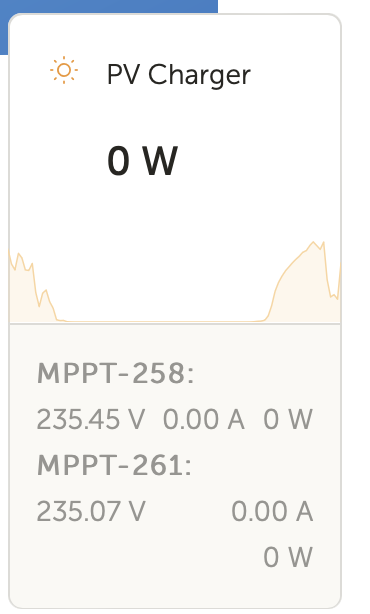
Also, the APC BX1400U-GR UPS I have installed in my office makes a lot of clicking noises during this ‘low yield’ period.
A typical sunny day, no clouds, looks like this:
Sunrise 07:30, sunset 19:00
EDIT: new screenshot with to to/from grid numbers:
The moment the batteries are full, the chargers, or something else, starts to play up, and the yield drops significantly.
I think it should look like this: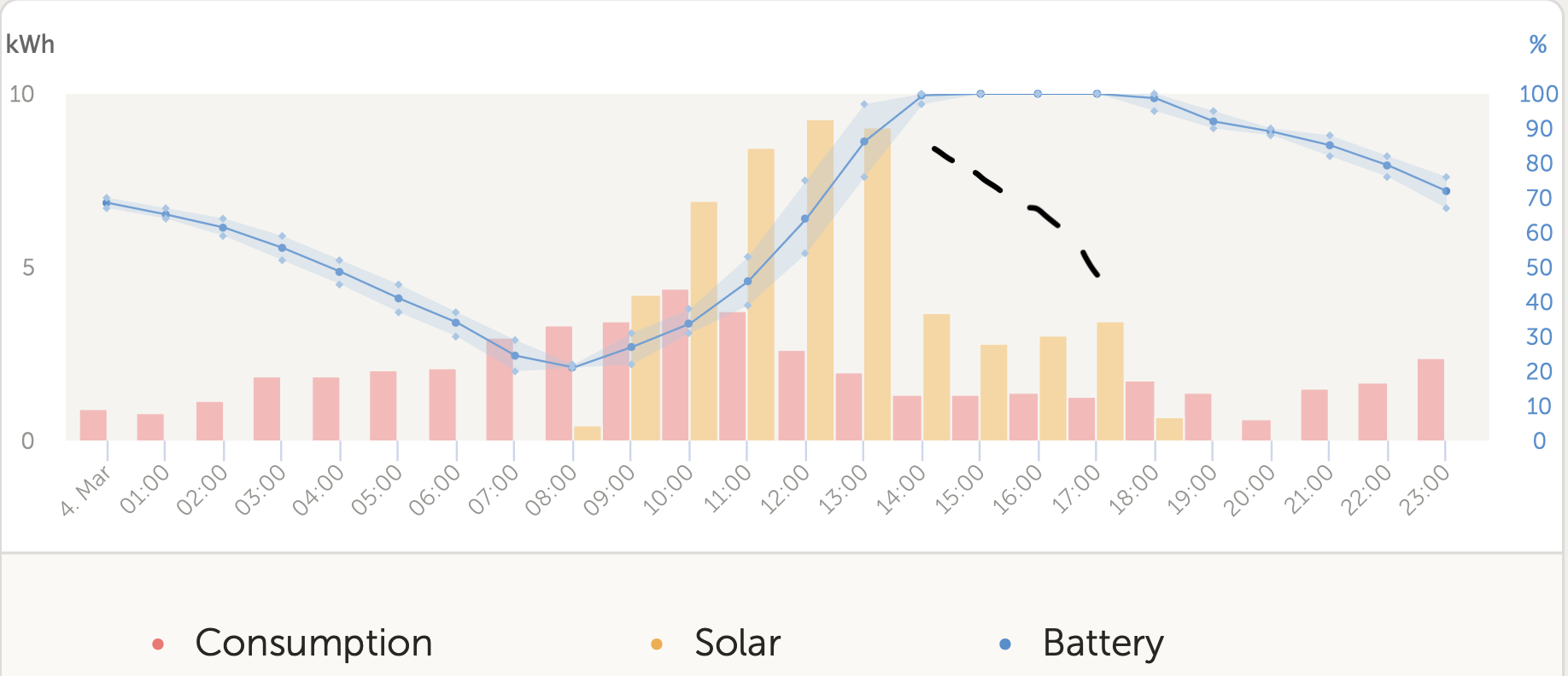
Screenshot from 15:55 hr that same afternoon (sunny day, no clouds):
(PV charger can be as high as 10400 W)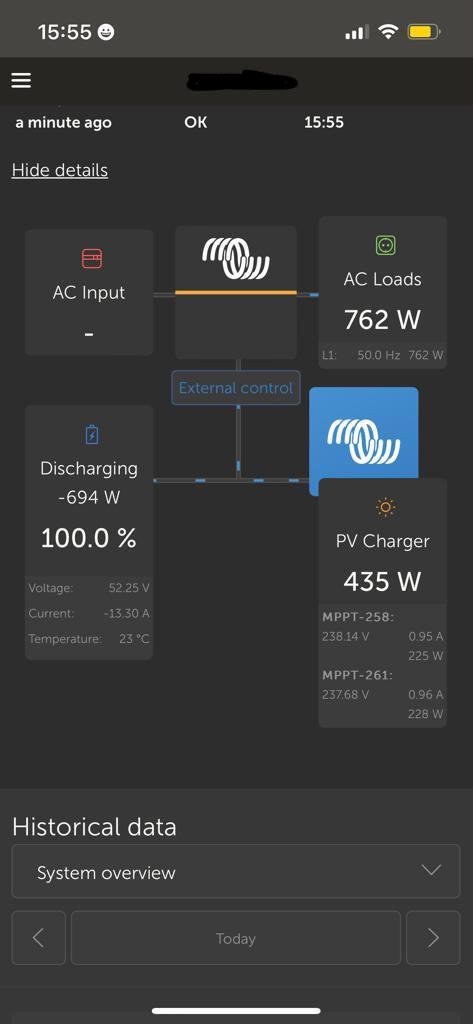
Can anybody help me find out what is going on?
My Spanish dealer keeps telling me everything is fine, but now he starts to recognize there is a problem.
My electrical knowledge is limited, but I have a feeling something is not adjusted right?
Please let me know what further information you need.
Many thanks in advance for all the help guys!

